Chicago Great Western Railroad history introduction
Chicago Great Western Railroad history traces its roots to A.B. Stickney, who early in his adult life entered the railroad business, set to link St. Paul with Chicago. He took the legal assets of the moribund Minnesota & Northwestern Railroad, and in 1884 pushed a line under that banner south to near the Iowa state line, forging a connection with the Illinois Central.
Unable to reach a deal with the IC, Stickney and his backers, who included some wealthy Englishmen, then used the Dubuque & Northwestern Railway to reach the Mississippi River at Dubuque. Another captive corporation, the Minnesota & Northwestern Railroad of Illinois, by 1888 completed a link from Forest Park, Ill., in west suburban Chicago, to Dubuque (using Illinois Central rights the last few miles). This line included the half-mile-long Winston Tunnel, the longest in Illinois. More important, it gave Stickney all the connections in America’s railroad Mecca.
Stickney realized that to survive, though, his railroad needed to enter more gateways. By 1903, through a combination of corporate acquisitions, construction, and leases, his company, more appropriately renamed Chicago, St. Paul & Kansas City Railway and later Chicago Great Western Railway, reached Des Moines, Kansa City, and Omaha. Additional feeder lines, mostly in Minnesota, produced a nearly 1,500-mile property.
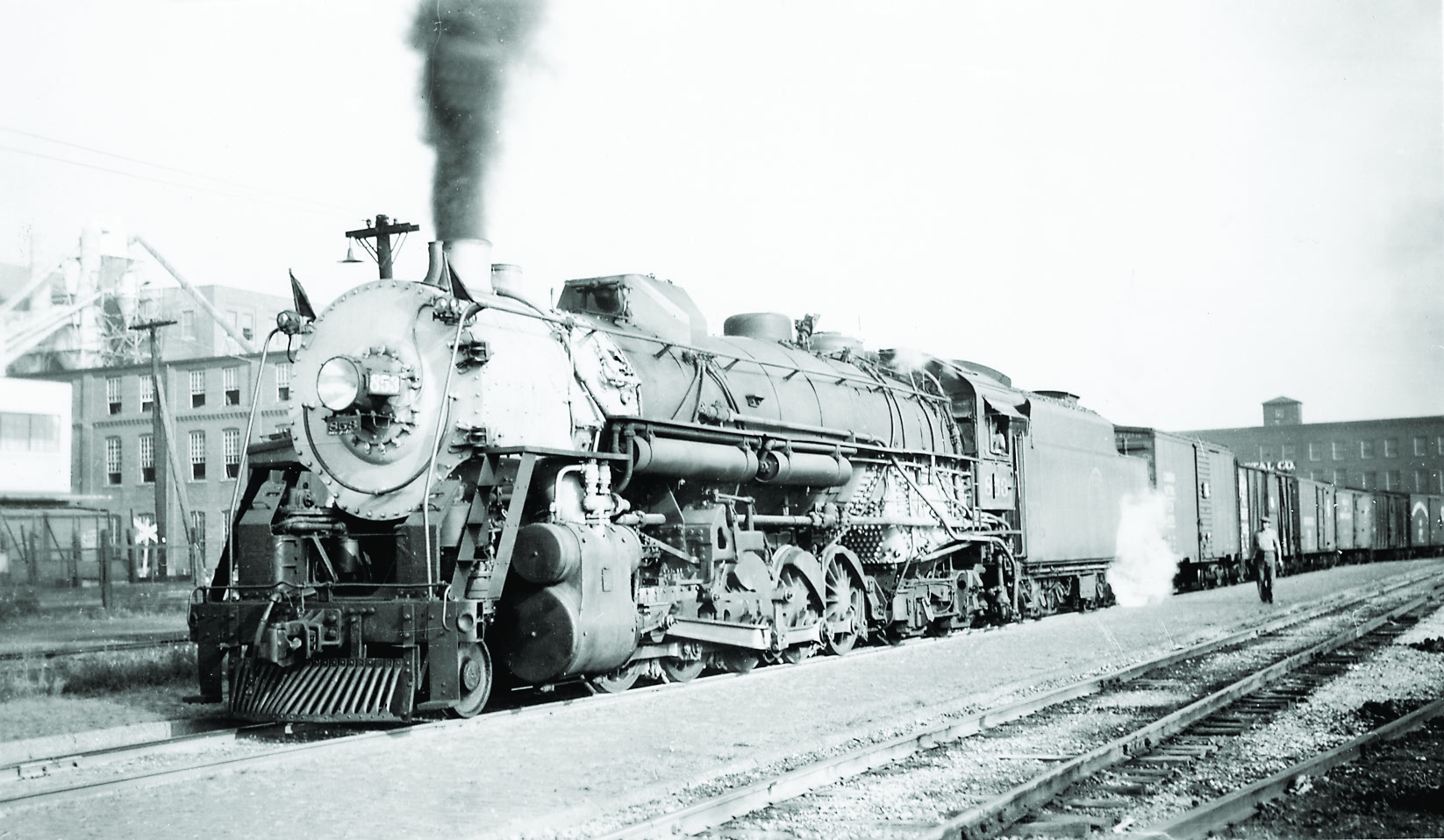
J.P. Morgan enters Chicago Great Western History
Even though Stickney had imaginatively assembled a Midwestern trunk line, he ultimately lost his railroad. The brief but severe Bankers’ Panic of 1907 threw CGW into receivership, a fate the company had avoided during the much more severe Panic of 1893. The nation’s financial wizard, J. P. Morgan, took control, and in 1909 a reorganized Chicago Great Western Railroad made its debut. Morgan wisely placed Samuel Morse Felton in charge, because the new president excelled as a railroad manager. His greatest triumph before joining the Great Western had been to turn the Chicago & Alton into a profitable property.
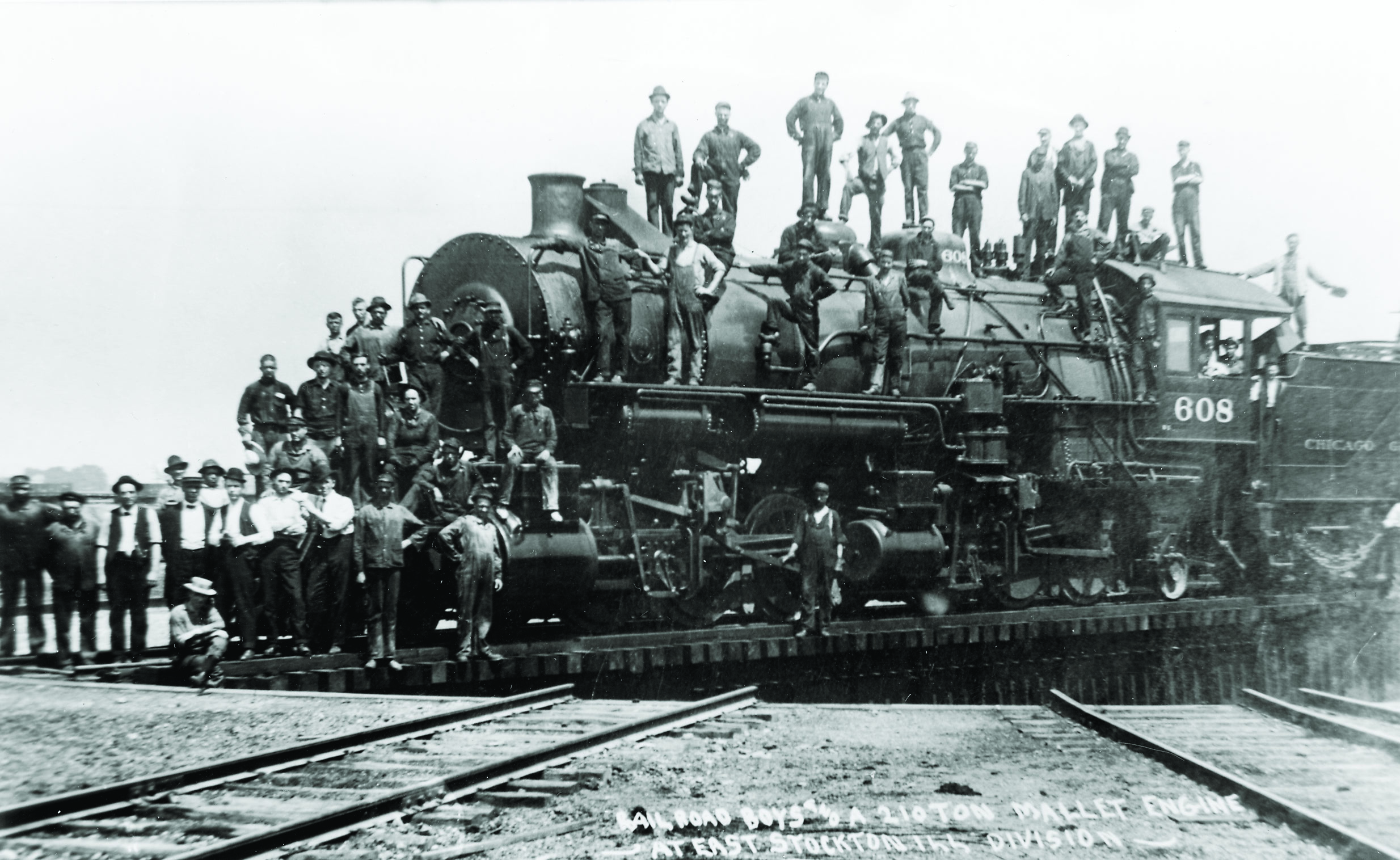
Motive power pioneer
The Felton years in Chicago Great Western railroad history resulted in a rehabilitated physical plant. Changes in rolling stock caught the attention of thousands of on-line residents. In 1910, for example, CGW purchased 10 Baldwin 2-6-6-2 Mallets (“Snakes,” as employees called them), and the road’s own shop forces at Oelwein, Iowa, rebuilt three F-3 class 2-6-2s (CGW had 95 total Prairie types) into three more 2-6-6-2s. Unfortunately, these giants did not work out, and in 1916 the Baldwins were sold to the Clinchfield and the homebuilds were rebuilt into 4-6-2s. In the Mallets’ place appeared reliable yet powerful 2-8-2s, of which CGW owned 35.
The railroad became a leader in the use of gasoline and later diesel motive power. Before World War I CGW assembled a small fleet of McKeen motor cars, knife-nosed “wind-splitters” that replaced steam-powered branchline and local trains. Its 1924 gas-electric car M-300 was the first unit of any type sold by the Electro-Motive Co., and it helped replace steam on trains 3 and 4 on the 509-mile Chicago–Omaha run. In 1929 CGW remodeled three McKeens to make up a deluxe gas-electric train, the Minneapolis–Rochester (Minn.) Blue Bird. CGW was mostly satisfied with its pioneering internal-combustion equipment.
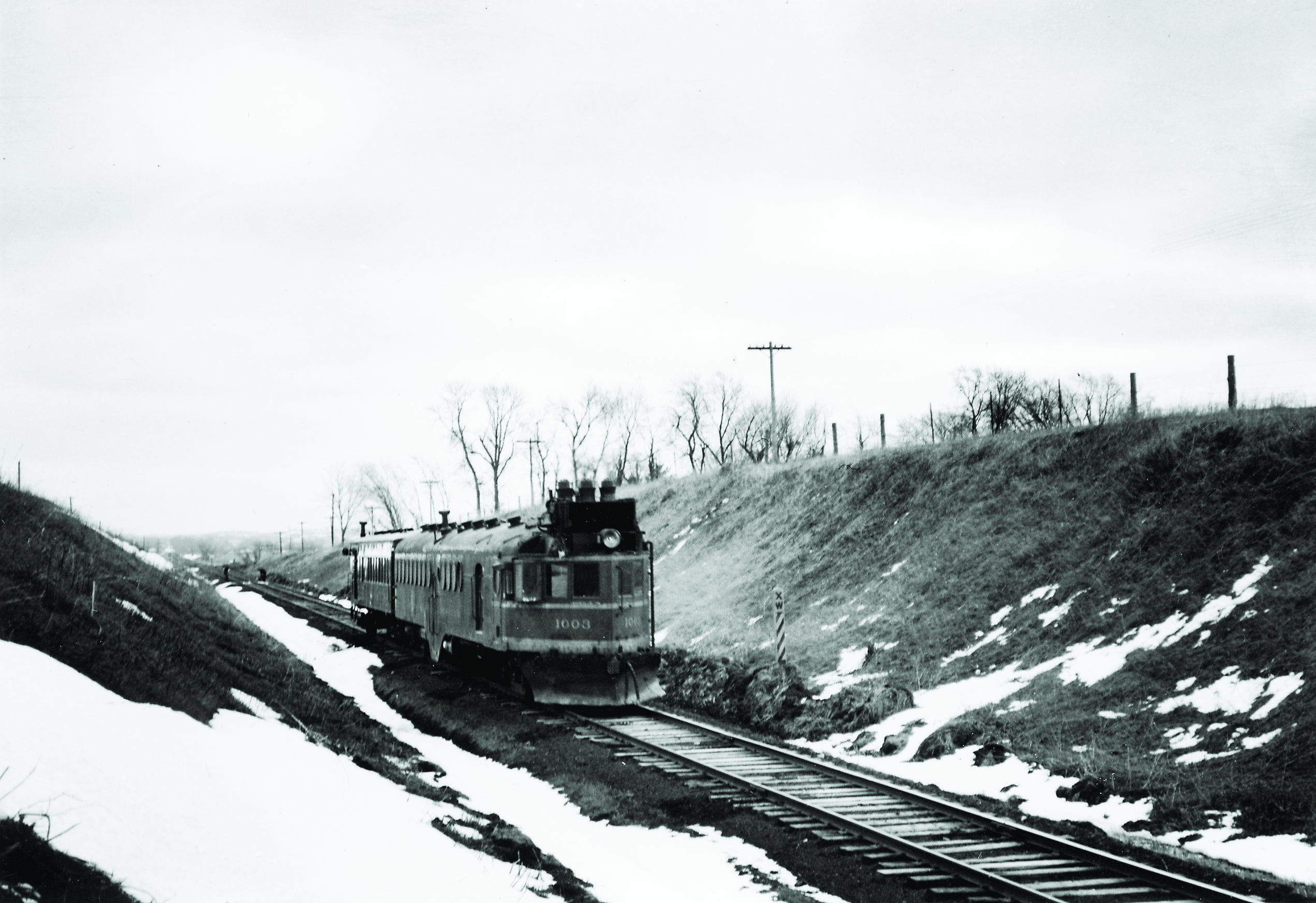
Chicago Great Western after Felton
CGW did its best to serve the public. Though battered by federal control during World War I and by the deepening agricultural depression of the J 920s, the company remained solvent. Unfortunately, the speculative mania of that decade led to a Chicago-based investment clique, the Bremo Corporation, seizing control. The Felton forces were then out, and railroad-car manufacturer Patrick “Pat” Joyce and his associates were in. Even though these antics, coupled to the devastating Great Depression, led in 1935 to CGW’s second bankruptcy, its innovative spirit did not die. Notable betterments were the purchase of 36 Texas-type locomotives, magnificent T-class 2-10-4s that easily wheeled big freights over the road’s sawtooth profile.
Piggyback pioneer
More significant, however, was the introduction in 1936 of regularly scheduled trailer-on-flatcar service, making the Great Western a pioneering steam road in what we now call intermodal service. Commented an official who made the first trip with a piggyback train between St. Paul and Chicago, “When you’re a poor road, you have to live by your wits.” Of course, the CGW remained surrounded by tough competitors, and it would never possess a stellar physical plant. Its spunky spirit endeared the road to the public, though.
As did other railroads, CGW rebounded from the Depression. In 1941 the company got a new lease on life, and the end of bankruptcy resulted in creation of the Chicago Great Western Railway Co. The future looked bright, especially with wartime traffic. Even after the end of World War II, the Great Western felt optimistic. Unlike some carriers of roughly the same size, CGW was not burdened with money-losing commuter service, too many low-density branch lines, or hostile local taxing bodies.
Deramus joins the Chicago Great Western
Just as the Bremo Corporation earlier seized power, the “Kansas City Group,” investors loosely associated with the Kansas City Southern Railway, took charge in 1948. The administrative shakeup soon led to William N. Deramus III becoming president. Though young and inexperienced, he was willing to think creatively. The Deramus era resulted in a generally better property, including major improvement in the sprawling facilities at Oelwein, center of the road’s operating and maintenance activities. Surely the hallmark of “the Great Western” (the name Deramus preferred) was the unusually long freight trains powered by eight or more F units. Although designed to maximize tonnage, this operating procedure led to slower service, in part because the road trains were also expected to perform local work.
Chicago Great Western passenger services
CGW’s passenger service was locally oriented, and the road had few deluxe trains, but among its stars in the 1920s were the Minneapolis–Kansas City TriState Limited and Mill Cities Limited; the Chicago–Rochester Bob-O-Link; and the four-car, Pacific-powered Minneapolis–Rochester Red Bird of 1923. By CGW’s last decade, only two trains remained — overnight, Post Office-driven, head-end and-one-coach schedules linking Minneapolis with Omaha and K.C. The last one expired in 1965.
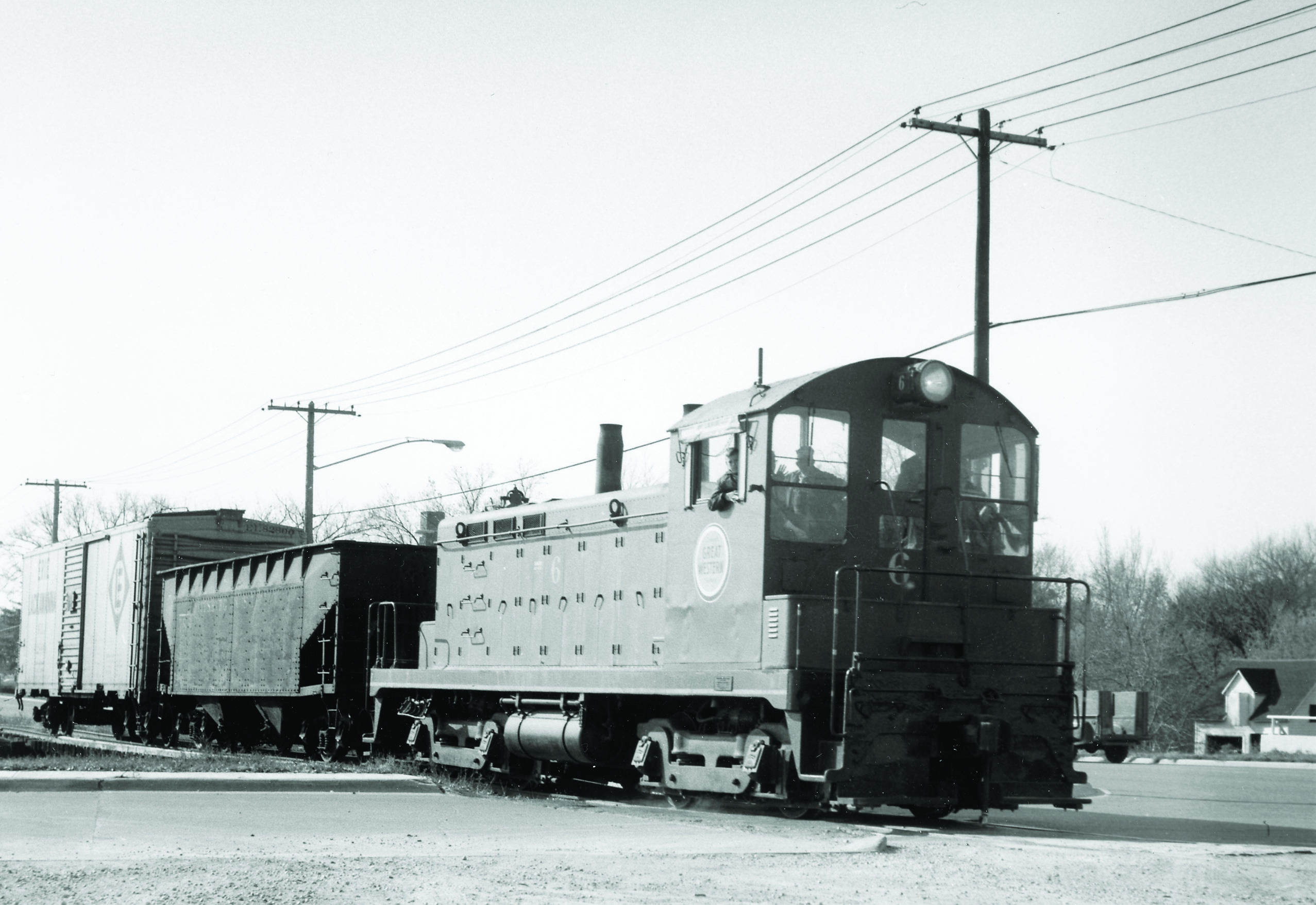
Merger with the Chicago & North Western
Being a small road in an era when competitors were expanding through mergers led to the corporate demise of the CGW. Saying that shareholders “must be protected,” the board sought a partner. Although the expectation was union with KCS or perhaps the Soo Line, the aggressive Chicago & North Western, headed by resourceful Ben W. Heineman, made an acceptable proposal, and in 1968 Chicago Great Western Railroad history ended with it becoming a Fallen Flag.
C&NW operated CGW switchers and F units for a short time, and assimilated Great Western’s only second generation diesels — eight GP30s and nine SD40s, all painted in the final solid “Deramus red” seen also on KCS and Katy — into the yellow fleet.
Although for a short time much of the former Great Western maintained its identity as C&NW’s Missouri Division, that operating organization ended and its lines started to disappear. By the 1980s much of the trackage had been retired, and at the start of the 21st century only about 145 miles remained. Survivors include portions of the main lines in Iowa (Mason City to the Fort Dodge area; Oelwein–Waterloo; and a leg into Council Bluffs); the Cannon Falls (Minn.) branch; and terminal trackage around South St. Paul, Minn., and just west of Chicago.






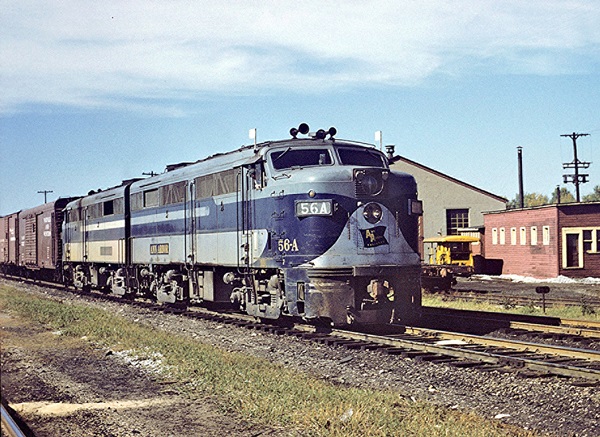


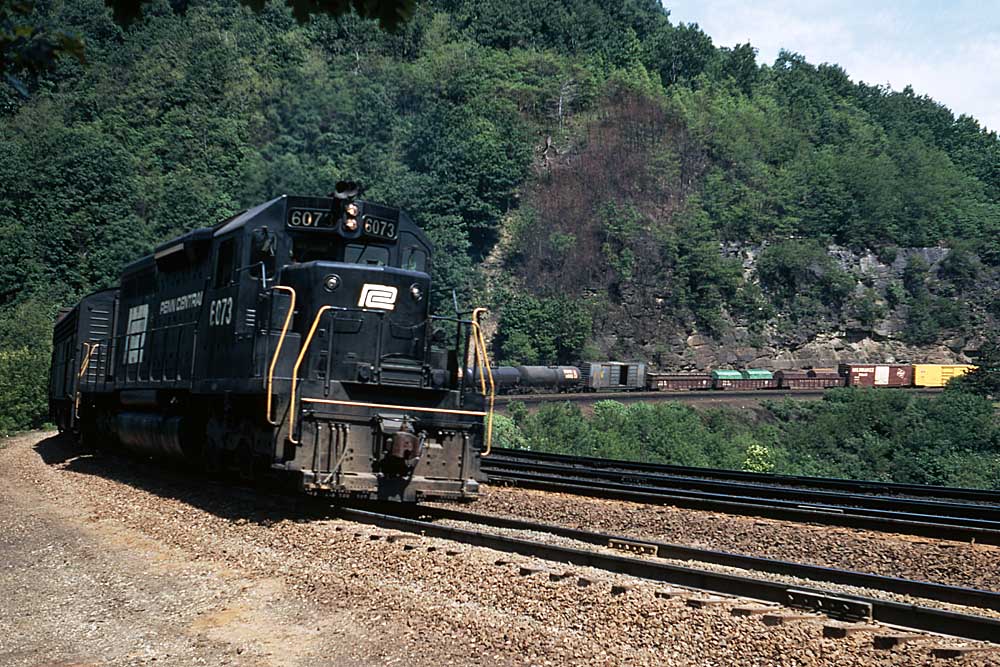




So why have a Chicago Great Western? A road I had never heard of until I got my first Official Guide in 1973. C&NW got access to Kansas City by buying it, just as acquiring the M&StL was done for the Peoria Gateway. There must be a good history on the CGW out there–maybe. I do have a Moody’s from 1963 and one from 1946 which do make clear how the CGW had to scramble for business. I had read of that oddball passenger train that lasted to 1965 because for a long time it actually made money on the mail & express business as the C&NW had given up a competed route in 1957 or so. Gifts from the Railroad Gods!—(did that happen to anyone else?) Stickley sounds like he wasn’t THAT good a manager of the business; Felton lasted a long time (I’ve come across his name before) and sound like the Savior of CGW–so why did he get ousted and were the new people THAT bad? Again, where was the CGW getting its business. I am reminded of the old line about the Rock Island (CRI&P) that The Rock had the second-best route everywhere it went!
I did read somewhere else about the Minneapolis & St. Louis–another “mystery road” that one wondered why it ever existed. (Hint: supplying winter wheat to Minneapolis mills!)